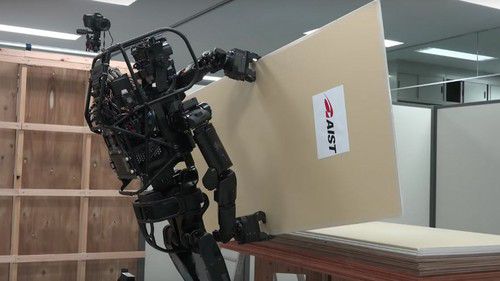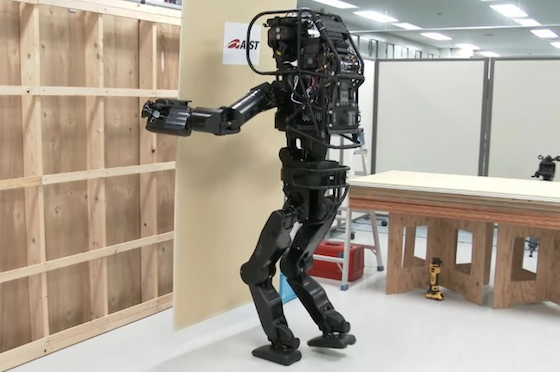
Automation: Robot Installs Drywall
10/03/2018
The Advanced Industrial Science and Technology Institute (AIST), a Japanese research facility based in Tokyo, has put out a video that’s receiving a lot of attention on the internet:
The Japanese are particularly positive toward automation generally, because of their lack of population growth (no immigration!) and hence fewer worker humans coming online in the future.
In today’s example, we see a strong and capable humanoid robot attaching a piece of sheetrock to the wall. Its robot arms are already fitted out with tools to do the task — so efficient!
The AIST robot can lift sheetrock, carry it to the wall and attach it to the joists.

Construction workers who earn their living by hanging sheetrock should be concerned that the HRP-5P will soon be cheaper than there are, at which point the humans will be dispensable.
It’s another example that many low-skilled workers are slated for obsolescence because of improved automation, a situation that makes continued immigration of low-skilled persons to be an obsolete policy.
Humanoid construction robot installs drywall by itself, Endgadget.com, October 1, 2018
It’s clever, if also a commentary on Japan’s labor priorities.
If Japan’s Advanced Industrial Science and Technology Institute has its way, construction workers might be a thing of the past. Researchers have built HRP-5P, a humanoid bot that can handle a variety of construction tasks when there’s either a staffing shortage or serious hazards. The prototype uses a mix of environment detection, object recognition and careful movement planning to install drywall by itself — it can hoist up boards and fasten them with a screwdriver.
The design doesn’t have as much freedom of movement as a human being, but makes up for that with numerous joints that flex to degrees you wouldn’t see in real people. It won’t always look the most natural when doing its job, but it’ll be effective. It can also correct for slips, and it’s not deterred when it has a limited field of view.
AIST’s robot is methodical, but you can’t call it quick given its tendency to take baby steps and otherwise act cautiously. The potential is huge, however. In addition to typical building construction work, robots like this could also help assemble aircraft and ships. The team is aiming for collaboration with private companies that would treat HRP-5P as a development “platform” that could lead to further breakthroughs. (Continues)
